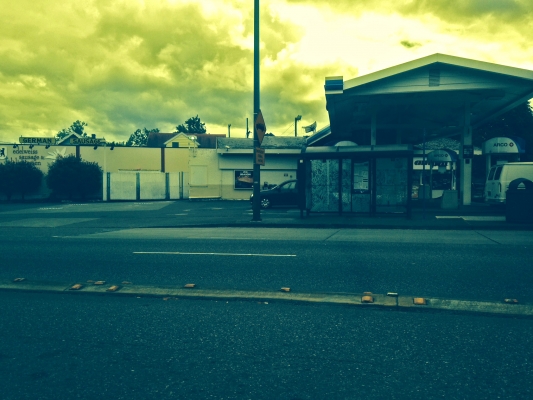Research finds medians make driveways safer

An OTREC report from Oregon State University looked at various center median and bicycle lane configurations, and how they affect traffic at road access points.
In the American Association of State Highway and Transportation Officials (AASHTO) publication A Policy on Geometric Design of Highways and Streets, commonly known as the Green Book, access points include the intersections of public roads as well as driveway locations. In the Green Book, most of the supporting research for the spacing of driveways is based on standard highway design procedures. They include simple human factors and geometric principles, and have not been thoroughly evaluated based on a variety of road cross section configurations.
Principal investigator Karen Dixon of Oregon State University sought to close this research gap by evaluating the influences of select cross-sectional-related design elements, specifically median configurations and bicycle lanes, on driveways.
Dixon's research team evaluated eight physical sites and four simulated scenarios with different driveway spacing and roadway cross section designs. The primary research goal was to better understand how median and bicycle lane configurations influence safety and operations at driveway locations.
For example, in one scenario, a driver making a right turn to enter a road where there is a raised median (as opposed to a two-way left turn lane) can focus directly on approaching vehicles from the left.
Dixon’s team found that the raised center median in this scenario can result in shorter critical gap values for right-turn maneuvers out of driveways. “Critical gap” refers to the minimum gap between cars that drivers seeking to enter the roadway will accept.
Their findings also suggest that the presence of the median helps to reduce a variety of crashes associated with mid-block driveway locations, including sideswipe crashes.
The team used crash data, traffic data and roadway information from driveway locations in Oregon, Arkansas, and Oklahoma. They supplemented the data with digital videos acquired during field studies of the sites. The five sites in Oregon had bike lanes, while the two Arkansas sites and one Oklahoma site did not. The research team recommends future in-depth studies that individually focus on the influence of bicycle lanes at driveway locations.
Researchers also performed simulation analysis in CORSIM to examine the influences of median type, traffic volume, and access density on traffic operational performance.
Their focus was on the influence of crash severity and type, as well as the associated gap acceptance for turning maneuvers at mid-block driveway locations.
They used the traffic simulator to study “aligned” (directly across the street from each other) versus “staggered” driveway orientations, and found that corridors with staggered driveway placement experienced considerably greater delay per vehicle when compared to their aligned driveway counterparts.
For more details, visit the project page or download the final report.
